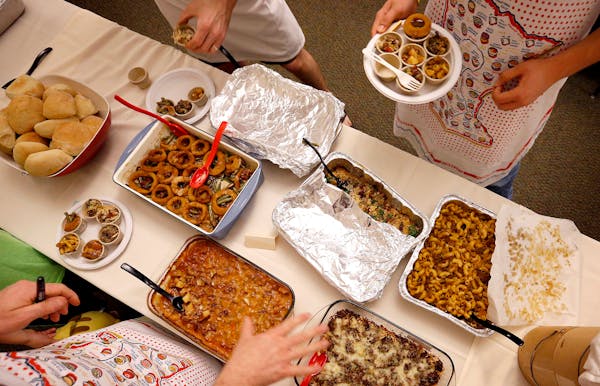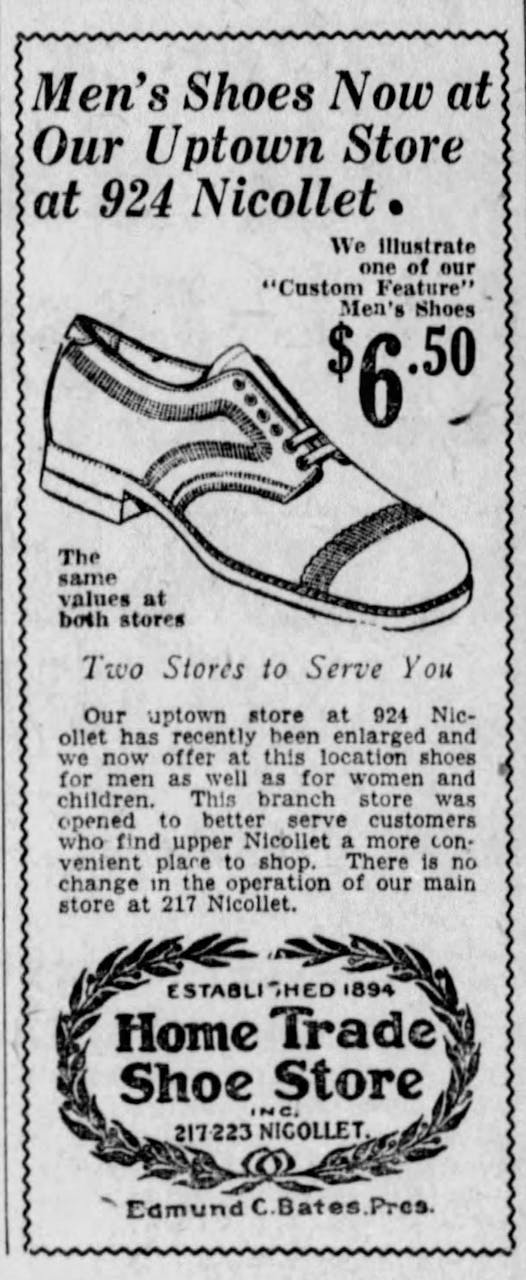Why is Uptown south of downtown in Minneapolis?
Listen and subscribe to our podcast: Via Apple Podcasts | Spotify | Stitcher
Live in a city long enough, and its geographic lingo becomes second nature.
Amy O'Meara, for example, has lived in "Lyn-Lake," an abbreviation for Lyndale Avenue and Lake Street. She also resided in the North Loop, coined after an old Minneapolis streetcar line. And then there was Uptown.
"It all makes sense, except Uptown," O'Meara said of the commercial area that is — bafflingly — south of downtown. O'Meara asked the Star Tribune to look into the name for Curious Minnesota, a new community-driven reporting project fueled by great questions from inquisitive readers.
"Uptown" is common parlance today for the district around Hennepin Avenue and Lake Street, but that is a relatively recent phenomenon. For most of the 20th century, the area was more commonly known as "Hennepin-Lake," despite efforts to push the Uptown moniker.
A century ago, in fact, Uptown appears to have referred to a very different part of Minneapolis — downtown. Newspaper clippings from the 1920s include Uptown references meaning the central core area further from the Mississippi River — beyond 7th street. One article described planning for an "Uptown Postal Station" at 7th Street and Hennepin Avenue.
But modern day Uptown really staked its claim in 1929 when one of the area's most prominent attractions, then the Lagoon Theater, was renamed the Uptown Theatre.
"The name 'Uptown' was chosen to conform with a movement now in progress to establish the Lake and Hennepin community as 'The Uptown District of Minneapolis,' fashioned after the famous and prosperous district of that name in Chicago," the Minneapolis Star reported at the time.
That Chicago area — now north of Wrigley Field — became a booming shopping and entertainment district in the 1920s after the arrival of the city's rail transit system, according to a 2013 story by WBEZ. The name aimed to put it on par with the city's downtown, which was to the south, WBEZ reported.
After the renaming of the Uptown Theatre in Minneapolis, the Hennepin-Lake Business Association changed its name to the Uptown Business Association.
By 1950 there were a number of businesses sporting the "Uptown" handle, based on research conducted by Thatcher Imboden, who co-wrote the 2004 history of the area, "Uptown Minneapolis." They included the Uptown Hasty Tasty Food Shop, the Uptown Radio Service and the Uptown Café.
But the name still hadn't quite reached the mainstream.
"When we would go and interview folks who had lived in the community for a long time, including some people who spent a lot of time in the 1940s in the Uptown area, they didn't call it Uptown," Imboden said.
That began to change in the late 1970s as businesses sought to distance themselves from the seedier connotations of Hennepin Avenue and Lake Street, said John Meegan, owner of Top Shelf tailors, which has since moved from Hennepin-Lake to the Lyn-Lake area.
"Hennepin and Lake was like a double negative. It conjured up two very bad images in the minds of most people," Meegan said. "And if you were a business and you got called, a common thing people used to say is, 'Is it safe to get out of my car?' "
Local business owners decided they needed to rebrand the neighborhood, he said, "And we took the name right off the Uptown Theatre."
This preceded the 1983 redevelopment of Calhoun Square into a major shopping destination, which Imboden's book notes was approximately when the Uptown name went mainstream. The Star Tribune's archives show that mention of the word "Uptown" began to rise exponentially in the early 1980s.
"It seems to me that it wasn't until the media in the city started recognizing it as Uptown in the '80s that people actually started talking about it more that way," Imboden said.
And over time that name has begun to encompass an area far larger than just the Hennepin-Lake intersection. Some businesses as far to the north as Franklin Avenue and to the east as Pleasant Avenue sport the Uptown name.
"It's almost like Uptown has been trying to assimilate areas that are nowhere near what I would have called the epicenter of Uptown," said Meegan, who takes pride in the unique identity of Lyn-Lake as a commercial center. "So it's become diluted a lot to me."
O'Meara said the answer to her question turns out to be more complicated than she expected.
"I was hoping it was [something] like, 'There used to be a hill and it got washed away in the storm of 1876,' " O'Meara said.
Imboden said people ask him the same question.
"The most definitive answer that I found was that the business owners wanted to name it after the area in Chicago," Imboden said. "And to me that's sufficient for most people.
---
If you'd like to submit a Curious Minnesota question, fill out the form below:
Read more Curious Minnesota stories:
Where did the term Minnesota Nice come from, and what does it really mean?
Why isn't Isle Royale a part of Minnesota?
Why does Minnesota tax Social Security benefits?
Why is Uptown south of downtown in Minneapolis?
Why can't Minnesotans figure out how to zipper merge?
What percentage of Minnesotans spend their entire lives here?
Were Minneapolis' skyways first created to combat the cold – or something else?
Why hasn't Minnesota ever produced a U.S. president?
How did Minnesota's indigenous people survive the extreme winters?




